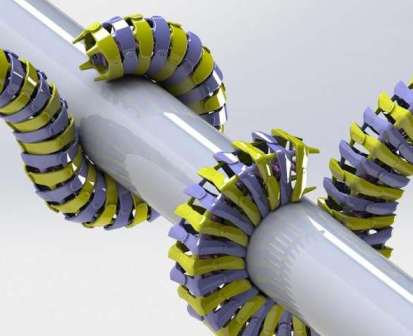How the Seahorse Got Its Square Tail
Genesis 1:31a
“And God saw every thing that he had made, and, behold, it was very good.”
Evolutionists and creationists alike enjoy gazing upon the elegant seahorse swimming lazily about the aquarium. However, only creationists are able to see that the seahorse bears the unmistakable stamp of design – all the way from the top of its horse-shaped head to the tip of its unique square tail.
 Yes, I said square tail. This striking design makes the seahorse considerably better at gripping and grasping than if it had curved sections in its tail. When you look closely, you will see that the tail is made up of about 36 square-like segments that progressively taper off in size along the length of the tail. By using a 3D printer to duplicate the tail and submitting it to crushing tests, an international team of researchers has now discovered that the squared sections also provide the seahorse with much better armor than a cylindrical tail.
Yes, I said square tail. This striking design makes the seahorse considerably better at gripping and grasping than if it had curved sections in its tail. When you look closely, you will see that the tail is made up of about 36 square-like segments that progressively taper off in size along the length of the tail. By using a 3D printer to duplicate the tail and submitting it to crushing tests, an international team of researchers has now discovered that the squared sections also provide the seahorse with much better armor than a cylindrical tail.
“Almost all animal tails have circular or oval cross-sections – but not the seahorse’s,” said Michael Porter, lead investigator and assistant professor in mechanical engineering at Clemson University. Porter’s research group is now using 3D printing to help them develop new structures and robotic systems.
Although evolutionists will tell you that the seahorse’s unique tail only appears to be designed, they act as if the tail really was designed! After all, how intelligent would it be for them to pursue new technologies based on the tail of a seahorse that has no intelligence behind it at all?
Prayer: Heavenly Father, it is so obvious to me that creatures like the seahorse were designed by You. I pray that You will use me to make others aware that all of creation points directly to You! In Jesus’ Name. Amen.
Author: Steven J. Schwartz
Ref: Phys.org, “Why the seahorse’s tail is square,” 7/2/15. http://phys.org/news/2015-07-seahorse-tail-square.html#jCp. Photo: Researchers found that the tail’s square segments created more contact points with the surface that it is gripping when compared to a tail with round segments. Credit: Michael Porter/Clemson University. (Fair Use)
© 2015 Creation Moments. All rights reserved.